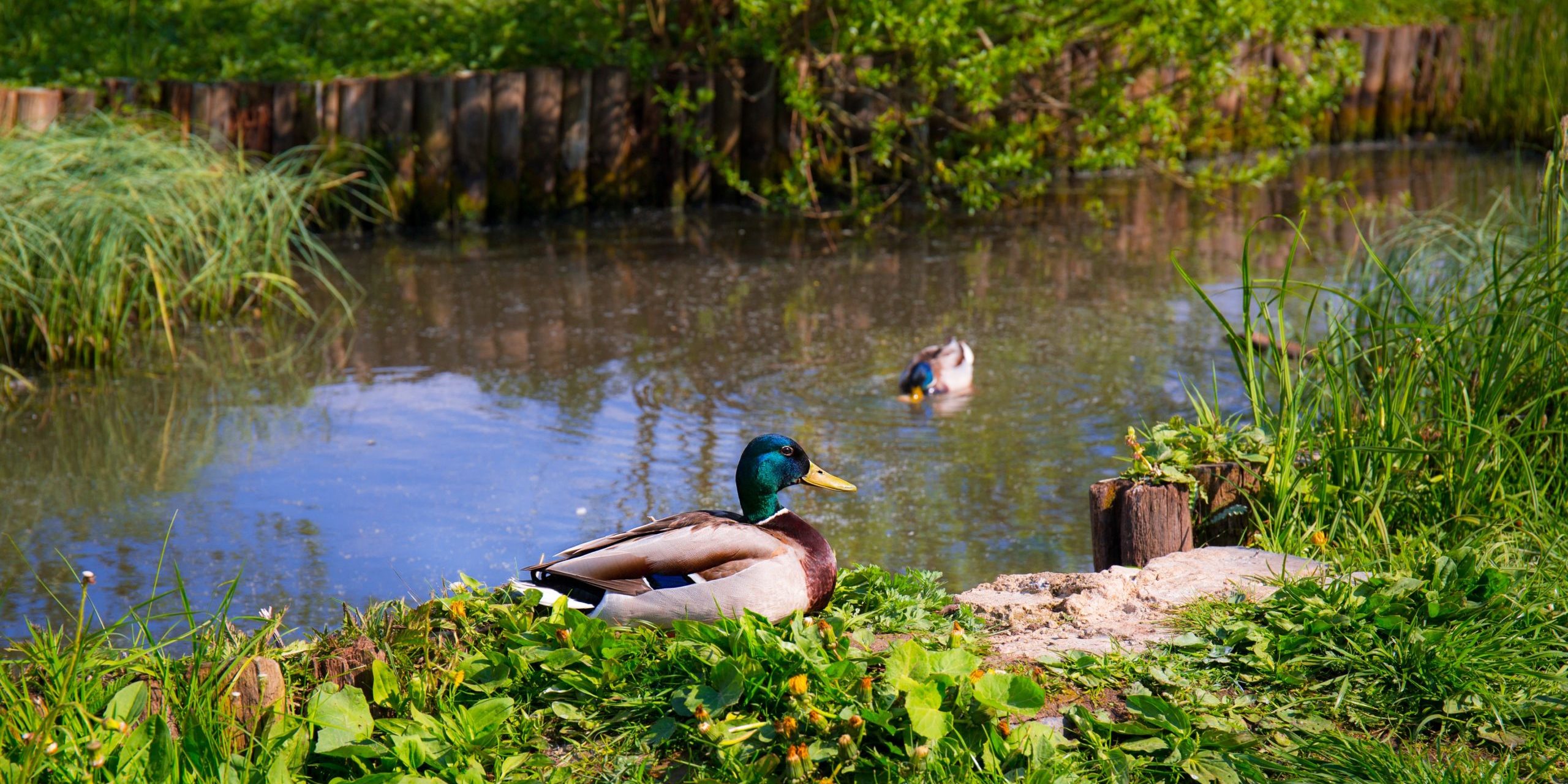Control Methods For Aquatic Plants in Florida Ponds and Lakes
Aquatic plants growing in ponds and lakes are beneficial for fish and wildlife. They provide food, dissolved oxygen, and spawning and nesting habitat for fish and waterfowl. Aquatic plants can trap excessive nutrients and detoxify chemicals. Aquatic wildflowers such as the water lily are sold and planted to provide floral beauty to garden ponds.
However, dense growths (over 25% of the surface area) of algae and other water plants can seriously interfere with pond recreation and threaten aquatic life. Water plants can restrict swimming, boating, fishing, and other water sports. Water plants can impart unpleasant taste (musty flavor), decaying vegetation emits offensive odors (rotten egg smell), and algae can discolor pond waters. Dense growths of plants can cause night time oxygen depletion and fish kills.
Green plants produce oxygen in sunlight, but they consume oxygen at night. Decomposing water weeds can deplete the oxygen supply, resulting in sport fish kills from suffocation. Dense plant growths can provide too much cover, preventing predation, and leading to stunted (small-sized) sportfish populations.
Water Weed Problems:
- Restricted recreation
- Fish kills
- Fish flavor problems
- Pond water odor problems
- Drinking water taste problem
- Stunted fish growth
- Prevention and Watershed Management
Prevention is the best way to reduce aquatic plant problems. It is cheaper and easier to prevent weed growth than to control weeds in your pond. Constructing ponds with steep slopes that drop quickly into deep water can prevent weeds from rooting. Construction of a sediment basin upstream of a pond or lake will trap out soil and maintain pond depth. Soil erosion and fertilizer runoff (including livestock wastes) are the two major causes of water weeds. Soil erosion magnifies the weed problems. Eroded soil particles not only make the pond shallower and allow rooted weeds to quickly invade, but soil particles also transport fertilizer (adsorbed nitrogen and phosphorus) that further stimulates weed growth.
Wise land use practices such as contour plowing, no-till farming, strip cropping, protecting shelter belts, and excluding livestock from the pond will significantly reduce water weed problems. All animal wastes and fertilizers should be diverted around ponds using a grass-lined diversion ditch. The recommendation to fertilize ponds directly in order to stimulate algae growth, block out sunlight, and shade out rooted aquatic plants is unwise. This treatment simply exchanges one problem (rooted weeds) for another (algae), which may be worse, and algae can seldom be sustained long enough by fertilizer for shading to be effective. This results in a pond enriched with fertilizer that stimulates algae and rooted weeds. The feeding of sport fish is generally unnecessary and can exacerbate weed problems. Important water weed prevention methods include the following:
Aquatic Plant Prevention Strategies:
- Prevent soil erosion
- Use strip cropping and contour farming
- Prevent fertilizer runoff
- Avoid adding grass clippings to ponds
- Minimize feeding fish and ducks
- Fence livestock from ponds
- Prevent animal waste and fertilizer runoff
- Prevent overgrazing
- Steep pond banks (3:1 slope)
Why do I have an excess of aquatic plants?
- Shallow water
- Clear water
- Excess fertility (nutrients)
- Fast reproduction
- Invasion of exotic weeds
- Aquatic Plant Control Methods
Selection of the best treatment or combination of treatments depends on the species of water plant, the extent of the problem, economic considerations, local environmental conditions, and pond uses. First, be sure that you have an aquatic plant problem. Some aquatic plant growths are minor and temporary, and do not require costly weed control actions, thereby saving you worry, time, and money. If aquatic plants cover more than 25% of the pond surface area, you should consider implementing weed control. Second, different types of weeds (algae, floating-leaf weeds, emergent weeds, and submersed weeds) require different treatments (Shelton and Murphy l989). Depending on the type of weed and the severity of the problem, one or a combination of the following control methods can be very effective:
Aquatic Plant Control Methods
- Dredge and deepen the pond
- Harvest (manual or mechanical removal) weeds
- Manipulate water levels
- Shade, dye
- Install pond bottom liners
- Use biological controls
- Use chemical controls
Dredging and Deepening
Removing pond bottom sediments and building steep pond bank slopes (3:1 slope) are effective ways to control rooted aquatic plant in shallow ponds. Dredging reduces aquatic plant problems directly by removing the plants, bottom sediment, and associated nutrients. Dredging and deepening shallow shoreline areas limits weed growth indirectly by exposing a soil layer that may be nutrient-poor or impervious to plant roots, and by decreasing the amount of sunlight available to plant life.
Dredging can be conducted on dry sediments, after the pond has been drained, or underwater. Hydraulic dredging is normally too expensive for use in small ponds, but draglines can be used for underwater pond dredging. On drained pond bottoms, dry-land excavation machinery such as bulldozers can be used. Although digging and removing bottom sediments by hand is hard work, it represents a simple, economical, and efficient alternative to mechanical dredging. The dredge spoils should be moved below the pond basin to prevent soil runoff back into the pond.

